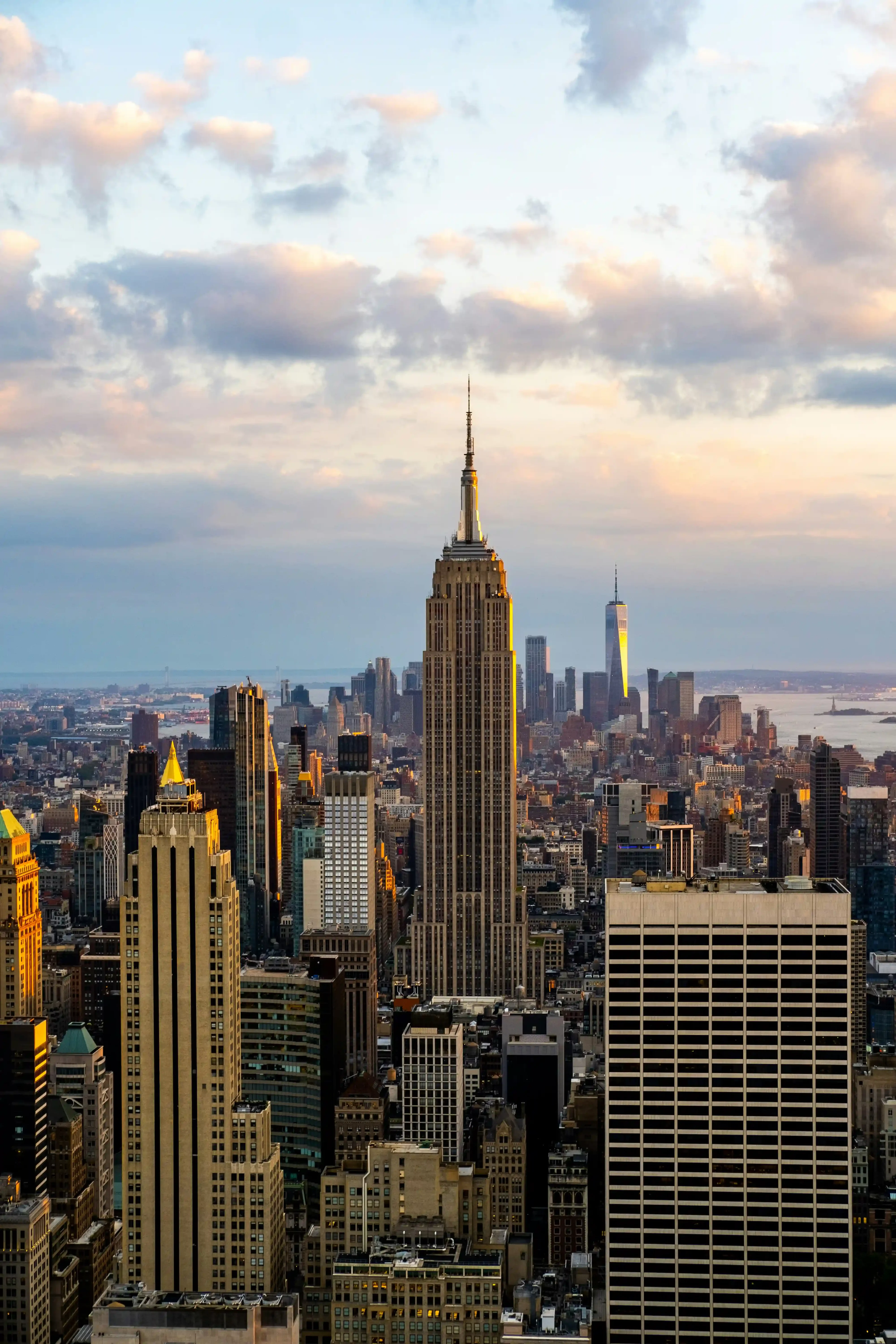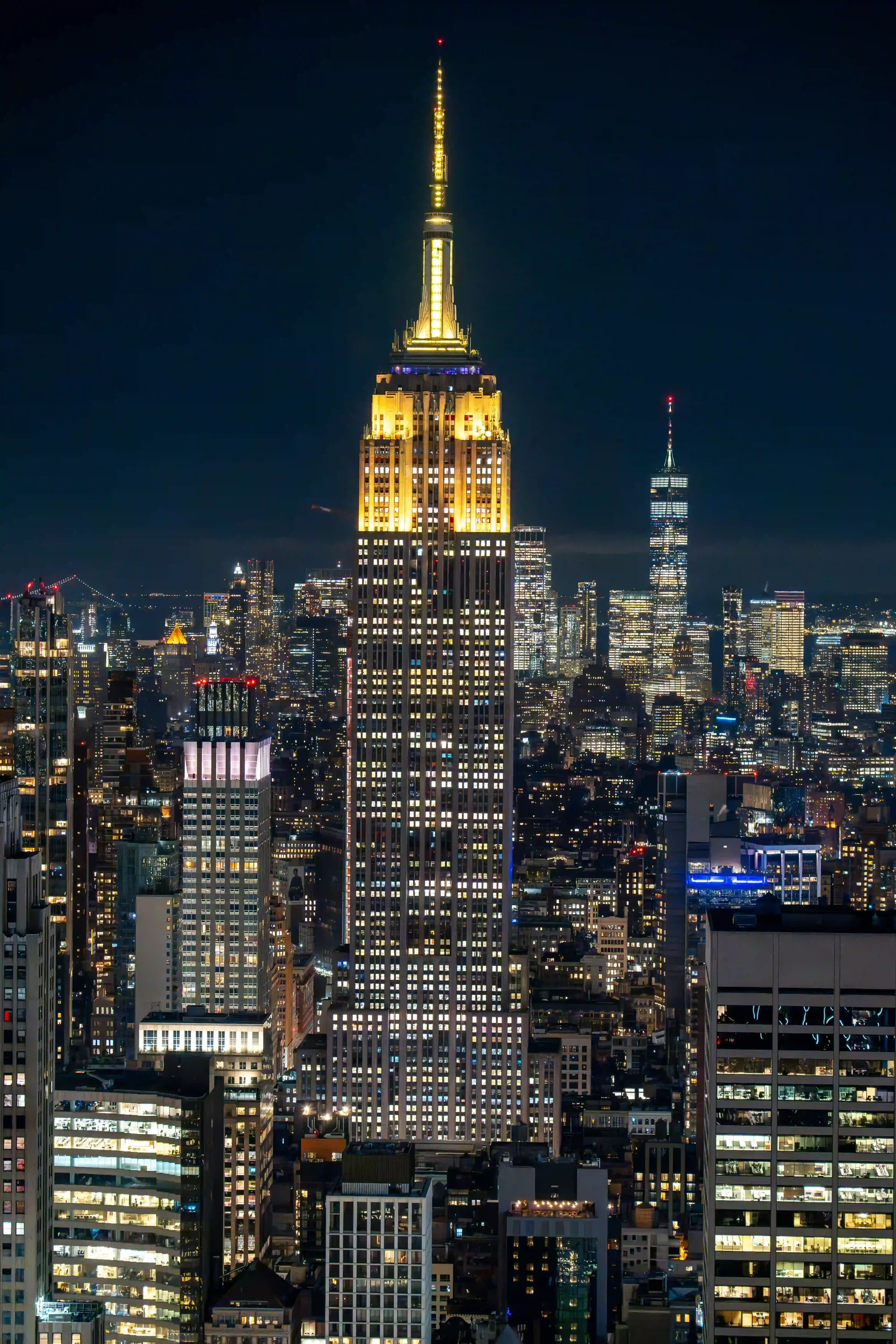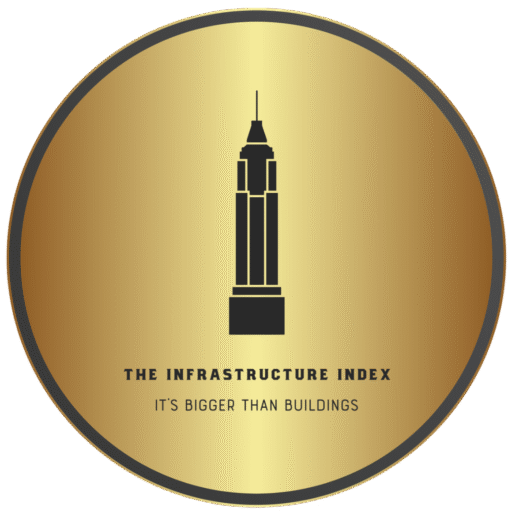Arguably the most influential skyscraper ever built, the Empire State Building has towered above Midtown Manhattan for nearly a century since its completion in 1931. Its silhouette is instantly recognizable, its legacy unmatched, and its image captured more times than any other building on Earth. At the time of its construction, it represented not only an extensive technological and architectural achievement but also a symbol of American ambition, optimism, and economic resilience during the Great Depression.
The Empire State Building was designed by architectural firm Shreve, Lamb & Harmon and construction was completed in just over a year—an extraordinary pace for a skyscraper of its magnitude and era. Initially, the tower was planned as a more modest-height structure (around 1,000 ft without the mast), but after the Chrysler Building secretly added its 185-foot spire (raising itself to 1,046 ft), the Empire State’s developers responded by adding five more stories and a 200 ft metal crown and mast. This final revision brought the building to a 1,250 ft roof height, securing its status as the world’s tallest upon its opening in May, 1931. Even without its antenna which was added over 20 years later in 1953, at 1,250 ft it stood distinctly taller than the Chrysler Building. That record stood for 41 years. Beyond its height, the Empire State cemented its cultural significance—appearing in hundreds of films and TV shows and emerging as a global symbol of New York City
Tower Stats
- Height (to tip): 1,454 ft (443.2 m)
- Roof height: 1,250 ft (381 m)
- Floors: 102
- Observation decks: 86th floor (open-air), 102nd floor (enclosed)
- Construction period: March 1930 – April 1931
- Construction speed: 1 year and 45 days (completed ahead of schedule)
- Architects: Shreve, Lamb & Harmon
- Design style: Art Deco
- Structural material: Steel frame with Indiana limestone and granite cladding
- Weight: Approx. 365,000 tons
- Elevators: 73 (modernized over time)
- Floor area: 2.7 million sq ft (250,000 m²)
- Official opening: May 1, 1931
Engineering and Design
Despite being built nearly a century ago, the Empire State Building’s steel skeleton remains a triumph of early skyscraper engineering. The steel frame, which forms the structural backbone of the tower, was constructed at a record-setting pace of four and a half stories per week. The building comprises approximately 60,000 tons of steel and 10 million bricks. Its exterior is clad in Indiana limestone, granite, and aluminum, contributing to its clean, vertical lines and iconic profile.
The original plans for the building called for a flat-topped tower. However, the spire—added during late-stage revisions—secured its place as the tallest building in the world at the time. It was also originally intended to serve as a mooring mast for dirigibles (airships), though the idea was quickly abandoned after proving unsafe. The structure’s antenna mast, which replaced the mooring equipment, now transmits television and radio signals.
Observation Decks and Tourism
The Empire State Building’s 86th-floor open-air observatory is among the most visited observation decks in the world, offering panoramic views across all five boroughs, New Jersey, and even into neighbouring states on a clear day. The 102nd-floor deck, located inside the building’s spire, provides an even higher—though enclosed—perspective.
Tourism plays a major role in the building’s operations. More than four million people visit the Empire State Building each year. In 2019, a $165 million renovation project dramatically enhanced the visitor experience, streamlining access and updating exhibits throughout the observatory levels. Today, the building continues to attract visitors from every corner of the globe.



Thank you, Photographers: Kit Suman, Dana Andreea Gheorghe, Tomasz Zielonka, Guille Sánchez, on Unsplash
Tenants and Commercial Use
The Empire State Building is home to more than 150 businesses spanning finance, media, fashion, and technology. Notable tenants include LinkedIn, Shutterstock, and JC Decaux. The tower underwent a massive modernization effort in the 2010s to attract top-tier commercial tenants, including updated HVAC, high-speed elevators, and energy-efficient lighting. As of 2025, the building boasts a 91% occupancy rate, serving as a prestigious address for both U.S. and international companies. The ground floor also includes retail stores, cafes, and access to a multi-level Starbucks Reserve.
Renovations and Sustainability
Over the past two decades, the Empire State Building has undergone more than $500 million in renovations, transforming it into one of the most energy-efficient pre-war skyscrapers in the world. In 2011, it achieved LEED Gold certification, thanks to upgraded insulation, smart energy systems, and modernized infrastructure. The building now uses carbon neutrality measures, advanced water recycling, and a building-wide energy management system. These updates have significantly lowered emissions while preserving the tower’s historic charm.
Fun Facts
- The Empire State Building is struck by lightning around 25 times per year.
- It was constructed in just 410 days, an exceptional speed for a building of its size.
- The building was originally designed without a spire; it was added later to compete for the height record.
- The Empire State Building is the most photographed skyscraper in the world (according to a 2011 Cornell University study).
- It’s also the most popular Uber destination in the world.
- The spire once featured a mooring mast for airships—a concept that was tested once and quickly abandoned.
- The tower’s lights are controlled digitally and can produce millions of colour combinations for special occasions.
- Its official ZIP code is 10118, dedicated solely to the building.
- The building has its own dedicated sustainability program and received LEED Gold certification for its environmental performance upgrades.
Cultural Legacy
The Empire State Building has appeared in over 250 films, with its most iconic role being the climactic scene in the original 1933 film King Kong. It has since appeared in countless media portrayals, from Ghostbusters to Spider-Man. Its instantly recognizable form is a symbol not just of New York, but of ambition, romance, and cinematic history.
More than just a movie star, the building has been at the center of global culture. It is illuminated in different colours throughout the year to commemorate holidays, awareness campaigns, and world events. Its powerful silhouette has become a symbol of resilience—especially after 9/11, when it again became the tallest building in New York for a decade.
The Empire State Building is more than steel and stone—it’s a living part of the world’s cultural fabric. From its towering presence in film to its symbolic lighting displays, it continues to inspire awe nearly a century after its completion. Few structures have captured the imagination of so many, for so long, in so many ways.

